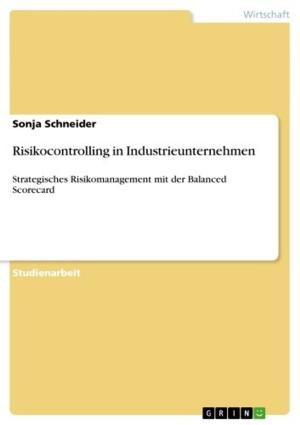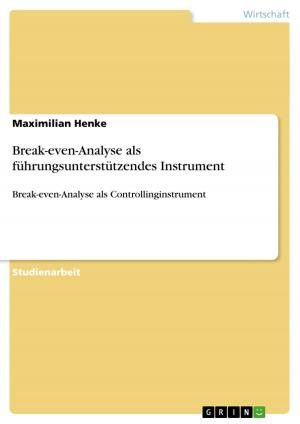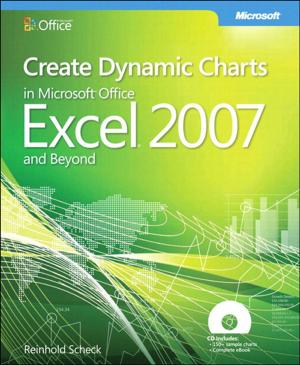Guide to Management Accounting Inventory turnover for managers
Theory & Practice: How to utilize management indicators to assist decision-making
Business & Finance, Accounting, Management, Financial| Author: | Shigeaki Takai | ISBN: | 6610000165667 |
| Publisher: | Shigeaki Takai | Publication: | April 10, 2019 |
| Imprint: | Shigeaki Takai | Language: | English |
| Author: | Shigeaki Takai |
| ISBN: | 6610000165667 |
| Publisher: | Shigeaki Takai |
| Publication: | April 10, 2019 |
| Imprint: | Shigeaki Takai |
| Language: | English |
ROE (Return on Equity) has been gradually improving in Japan and is drawing attention now.
According to the Ito report announced by the Ministry of Economy, Trade and Industry in August 2014, it was pointed out that the issues of Japanese companies are not in asset turnover rates and financial leverage, but in terms of their ability to make earnings, compared to western companies. However, I believe that both accounts receivable turnover and inventory turnover are generally lower than those in Europe and the United States, among asset turnover rates, which is an issue for CCC (Cash Conversion Cycle) management.
As for inventory, we position inventory turnover days as company-wide common control index for decision-making, not traditional inventory turnover rate and inventory turnover period, and we propose integrated activities of management team and operation site to improve ROE and ROIC (Return on Invested Capital).
Inventory is an important management resource
Inventory is said to be a source of profit for business, at the same time, to cause loss. Especially in manufacturing, retail and wholesale business, management indicators are used to measure whether product inventory is being converted into sales efficiently.
In general, the following two indicators are used.
Inventory turnover rate
Inventory turnover = sales · cost of sales (annual) ÷ inventory amount
The inventory turnover rate is mainly used by executives for presentations for investors or shareholders.
Inventory turnover period
The inventory turnover period is an indicator that shows how long it takes to have inventory for days or months, or to consume (sell) all inventory.
Inventory turnover period = inventory amount ÷ sales or cost of sales (monthly or daily)
Both are said to be indicators to see if inventory is appropriate. It is enough to tell about past and current situation of inventory, but I think that it is inappropriate as an indicator for future decision making. In other words, it is an index for financial accounting, not inventory turnover as management accounting.
As an Inventory-centric management consultant, I am convinced that inventory turnover days are an indicator that can assist decision-making to be shared by management, operations staffs such as sales, manufacturing, procurement and logistics.
Rather than handling inventory turnover as a mere indicator used at the operation site, in order to create corporate value, in relation to other management indicators as management accounting, and also in order to effectively encourage the improvement activities, what kind of practical knowledge, the systems which supports and finally practical solutions and concrete examples for inventory management through my vast experience accumulated are explained.
In this book, I have explained CCC using the latest quarterly settlement of accounts figures (as of the end of January 2019) that can be grasped at the time of publication which also different from conventional books.
It would be greatly appreciated if it could be utilized as a guide book for inventory control.
ROE (Return on Equity) has been gradually improving in Japan and is drawing attention now.
According to the Ito report announced by the Ministry of Economy, Trade and Industry in August 2014, it was pointed out that the issues of Japanese companies are not in asset turnover rates and financial leverage, but in terms of their ability to make earnings, compared to western companies. However, I believe that both accounts receivable turnover and inventory turnover are generally lower than those in Europe and the United States, among asset turnover rates, which is an issue for CCC (Cash Conversion Cycle) management.
As for inventory, we position inventory turnover days as company-wide common control index for decision-making, not traditional inventory turnover rate and inventory turnover period, and we propose integrated activities of management team and operation site to improve ROE and ROIC (Return on Invested Capital).
Inventory is an important management resource
Inventory is said to be a source of profit for business, at the same time, to cause loss. Especially in manufacturing, retail and wholesale business, management indicators are used to measure whether product inventory is being converted into sales efficiently.
In general, the following two indicators are used.
Inventory turnover rate
Inventory turnover = sales · cost of sales (annual) ÷ inventory amount
The inventory turnover rate is mainly used by executives for presentations for investors or shareholders.
Inventory turnover period
The inventory turnover period is an indicator that shows how long it takes to have inventory for days or months, or to consume (sell) all inventory.
Inventory turnover period = inventory amount ÷ sales or cost of sales (monthly or daily)
Both are said to be indicators to see if inventory is appropriate. It is enough to tell about past and current situation of inventory, but I think that it is inappropriate as an indicator for future decision making. In other words, it is an index for financial accounting, not inventory turnover as management accounting.
As an Inventory-centric management consultant, I am convinced that inventory turnover days are an indicator that can assist decision-making to be shared by management, operations staffs such as sales, manufacturing, procurement and logistics.
Rather than handling inventory turnover as a mere indicator used at the operation site, in order to create corporate value, in relation to other management indicators as management accounting, and also in order to effectively encourage the improvement activities, what kind of practical knowledge, the systems which supports and finally practical solutions and concrete examples for inventory management through my vast experience accumulated are explained.
In this book, I have explained CCC using the latest quarterly settlement of accounts figures (as of the end of January 2019) that can be grasped at the time of publication which also different from conventional books.
It would be greatly appreciated if it could be utilized as a guide book for inventory control.















